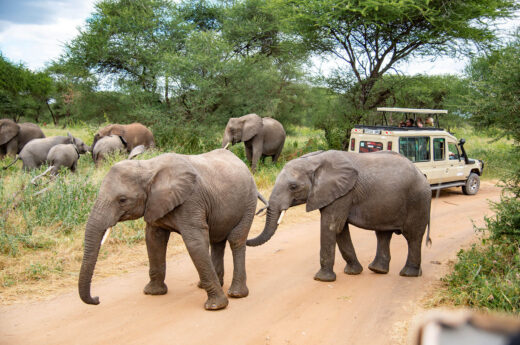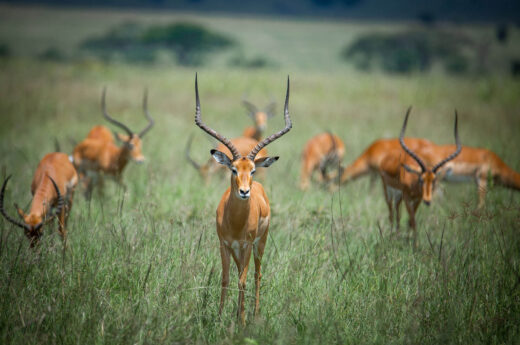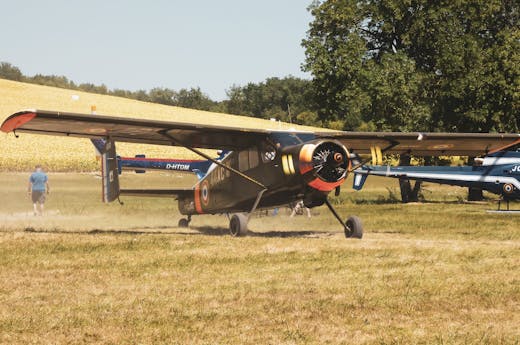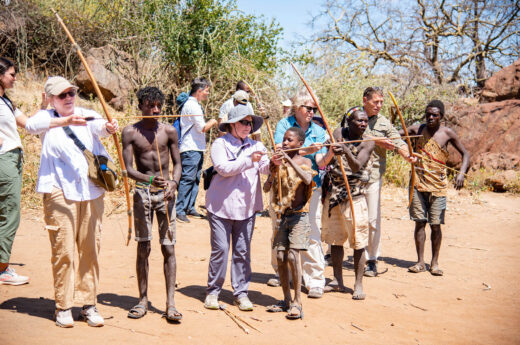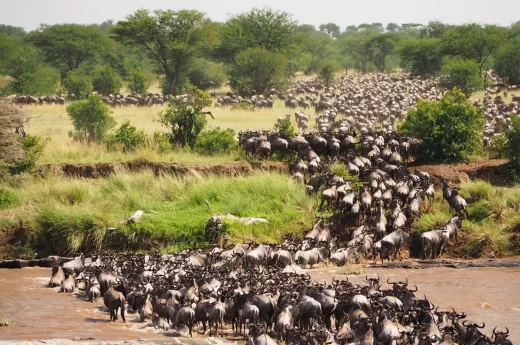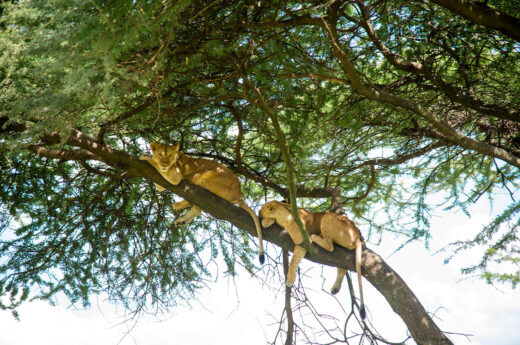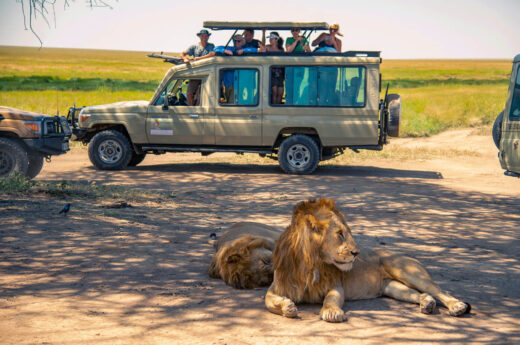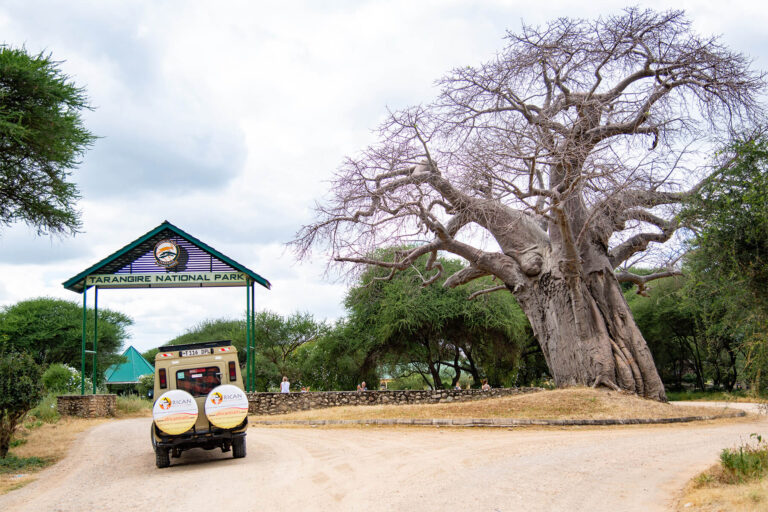
Tarangire National Park
Tarangire stands out among its peers thanks to an abundance of two of nature’s giants: African elephants and the peculiar baobab tree.
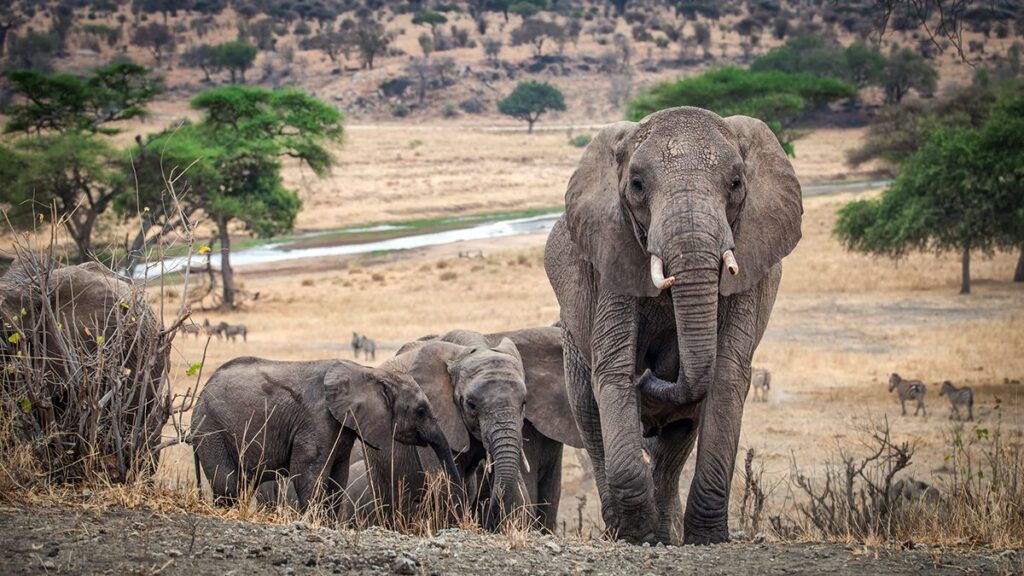
About Tarangire
Tarangire National Park, established in 1970, is Tanzania’s sixth-largest national park, covering 2,850 km². Named after the Tarangire River, which means “winding river of warthogs,” the park is slightly off the popular Northern Safari Circuit. It offers a unique experience with species like the fringe-eared oryx, not found in other areas.
With fewer tourists, Tarangire provides a more peaceful wildlife experience. It’s known for its large populations of African elephants and baobab trees. The park sees an influx of wildlife during the dry season when the river is the only reliable water source.
In the dry season, vast herds of game gather, but during the rainy season, wildlife disperses and roads become difficult to access. Despite this, the park’s tranquil atmosphere and rich biodiversity make it a hidden gem for safari enthusiasts.
Highlights
Discover the adventurous side of Tarangire with game drives through vast plains, birdwatching by the river, and cultural tours with local communities.
Elephants
3000 elephants converge on Tarangire during the dry season, with herds up to 300 strong. Excellent sights year-round.
Baobab Trees
An abundance of these peculiar ‘upside-down trees’ are found within the park. Visitors can walk inside the “Poacher’s Hide” tree.
Bird-watching
A bird lover’s paradise, with over 500 species, including rare endemic species and summer migrants.
Predators
Good sightings of lions, cheetahs, leopards, and spotted hyenas. Also the possibility of highly endangered African wild dogs.
Unusual Species
Fringe-eared Oryx, the rare Coke’s hartebeests, long-necked gerenuk, dik-dik, Grant’s gazelles, amongst others.
Rock Paintings
Hundreds of these artworks from prehistoric man can be found, particularly in the Kolo district, outside of the park.
Different areas of the Tarangire
Weather and Climate
January & February – A dry spell occurs after the short rains. The exact timing is difficult to predict.
March – May – ‘Long rains’ – On most days, rain occurs, although it rarely rains the entire day. Cloudy skies are common. Cold fronts commonly roll in during April and May causing temperatures to get much colder.
June – October – Typically no rain with temperatures ranging between 26°C/79°F and 14°C/57°
November – December – ‘Short rains’ – Unreliable wet season lasting up to four weeks, with brief showers each day. Daytime temperatures average 28°C/82°F, cooling to 16°C/61°F at night.
Activities
Experience Tarangire’s diverse activities, including thrilling safaris, cultural encounters, and more, immersing you in the park’s rich wildlife and natural beauty.
Game Drives
Setting out in the cooler hours of the day when the wildlife is most active, you will travel in a customized safari vehicle with an experienced guide.
Hot Air Balloon Trips
Drift quietly over the unsuspecting wildlife below in an early morning adventure that is truly unforgettable.
Night Game Drives
Permitted operators may offer night drives, where they will have the opportunity to view the park’s nocturnal species, such as civet and aardvark.
Maasai and Barabaig Cultural Experiences
Visit traditional homesteads for a fascinating glimpse into these ancient cultures.
Rock Paintings
Take a day trip to the Kolo region nearby to view some of the hundreds of examples of prehistoric art adorning the rock formations.
Bird Watching
With over 500 recorded species and numerous endemics and migratory visitors, the park is a bird lover’s paradise.





